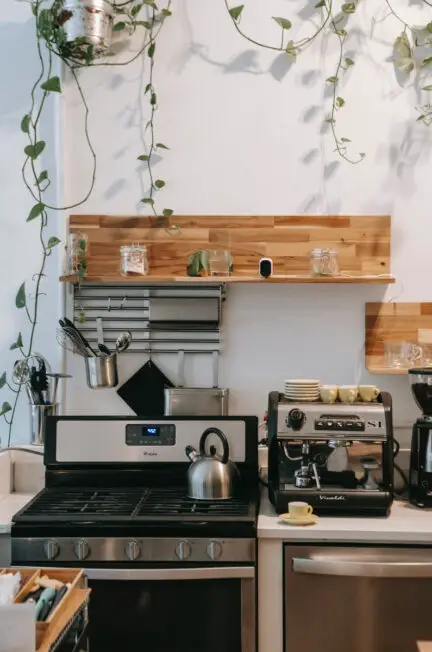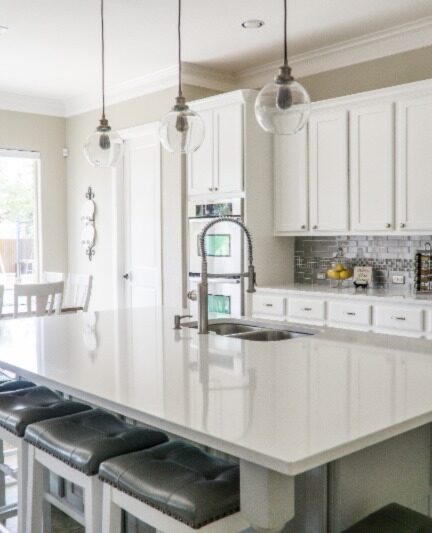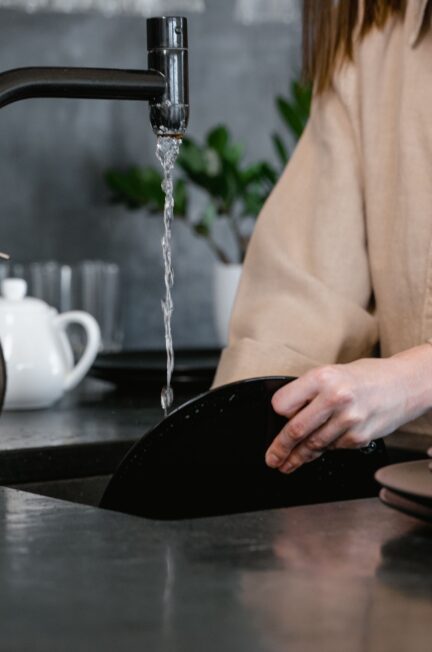Do you find yourself constantly rummaging through your kitchen cabinets, searching for that elusive blender or toaster? Is your countertop cluttered with a jumble of appliances? It’s time to take control and bring some order to your kitchen.
Organizing your kitchen appliances not only makes it easier to find what you need but also creates a more functional and efficient space. With a few simple steps, you can transform your chaotic kitchen into a well-organized haven of culinary creativity.
How To Organise Kitchen Appliances?
In this blog, I will share some practical tips and tricks on how to organize your kitchen appliances, from decluttering and categorizing to finding the perfect storage solutions. Say goodbye to the frustration of a cluttered kitchen and hello to a streamlined and efficient cooking experience.
Declutter and Access Appliance Usage
Decluttering and evaluating appliance usage are critical steps in creating an organized and productive kitchen. Homeowners may simplify their culinary area and create a more productive cooking environment by encouraging them to organize their kitchen appliances. They may minimize unneeded clutter and make place for more effective organization by retaining only the necessities they utilize daily.
Assessing appliance utilization is important because it helps people discover unused kitchen appliances that may no longer be useful in their everyday cooking activities. Kitchens frequently gain an extensive amount of extra appliances over time, many of which wind up collecting dust owing to little use.
Homeowners may make informed decisions about whether to keep, give, or dispose of by recognizing this underutilized or superfluous equipment. This not only reduces visual and physical clutter but also saves valuable kitchen corner spaces for the appliances that truly add value to their cooking and meal preparation.
Categorize Appliances by Function
Sorting kitchen gadgets by function is a clever way to achieve maximum organization and efficiency in the cooking environment. Individuals may improve their kitchen workflow and reach the necessary tools more simply by grouping appliances depending on their specialized uses, such as cooking, baking, mixing, or beverage-making.
There are various advantages to creating specialized zones for each appliance type. For starters, because everything is rationally organized in its provided space, it decreases the time spent searching for certain equipment. This increases productivity while decreasing frustration during meal preparation.
Second, categorizing appliances promotes a clean and clutter-free kitchen environment. Countertops and storage spaces stay neat and unencumbered since each appliance has its dedicated location.
Furthermore, it improves space utilization by storing equipment with similar tasks together, optimizing the kitchen layout, and ensuring that every inch of space is utilized efficiently.
Categorizing appliances by function promotes better maintenance and care by allowing consumers to focus on specialized cleaning regimens appropriate to each category, therefore extending the lifespan of their valued kitchen gear.
Finally, categorizing kitchen appliances by purpose results in a well-organized, efficient, and visually beautiful culinary area, which improves the whole cooking experience and makes everyday kitchen activities more joyful.

Identify Ideal Storage Ideas
Identifying the best places to store kitchen items is critical for keeping your kitchen organized and effective. Encouraging homeowners to consider the frequency of usage as well as available space when deciding where to keep their equipment is crucial.
For frequently used appliances, such as toasters or coffee makers, countertop storage is ideal. Placing these items within easy reach saves time and effort during daily use. However, it’s crucial to strike a balance and avoid cluttering countertops, reserving the space for essential items only.
For less frequently used appliances, such as specialty gadgets, cabinets or shelves are excellent storage options. Cabinets offer a clean and neat appearance, while shelves provide easy visibility and access to items.
Appliance garages are another useful option, especially for small kitchen appliances such as blenders or mixers. These dedicated compartments give a disguised yet accessible location to store equipment, keeping them off the counters and neat.
Finally, determining the best storage locations for kitchen equipment based on usage frequency and available space enables a well-organized and efficient kitchen, with products conveniently accessible when needed and neatly stored when not in use.
Utilize Vertical Storage Solutions
Vertical storage options in the kitchen may be game changers when it comes to creating a more organized and spacious cooking environment. Wall-mounted shelves or racks are an ideal method to store smaller equipment, freeing up valuable counter space and creating a cleaner, less crowded appearance in the kitchen.
Vertical storage alternatives offer the benefit of being adaptable in their use. They not only serve as useful storage but also as a display for displaying attractive or frequently used appliances. This may give a beautiful aspect to the kitchen while also keeping important items easily accessible.
Furthermore, vertical storage improves appliance accessibility. Individuals may quickly discover and obtain the equipment they require by hanging objects on the wall rather than searching through cupboards or messy worktops. This convenience leads to a more effective cooking process, making it easier to prepare tasty meals with all of the required ingredients nearby.
In conclusion, incorporating vertical storage solutions like wall-mounted shelves or racks maximizes the use of available space, creates a more organized kitchen, and allows for both storage and display of appliances. It’s a practical and versatile approach to improving kitchen functionality and aesthetics.
Consider Concealment Options
Appliance garages, curtain panels, and cabinet doors, for example, provide various advantages for keeping a clean and clutter-free kitchen. Readers may efficiently hide appliances while they are not in use by employing these solutions, providing a cleaner and more visually pleasing countertop space.
Furthermore, Appliance garages give a dedicated, enclosed space for storing small appliances, whilst curtain panels or cabinet doors provide a fashionable and versatile method to conceal bigger equipment. The emphasis on concealment enables readers to create a more organized kitchen environment and appreciate the ease of having gadgets that are easily available when needed yet neatly tucked away when not in use.
Use Drawer Organizers and Dividers
Utilizing drawer organizers and dividers in the kitchen helps to improve organization, especially for tiny appliance accessories. These organizers and dividers give dedicated locations for measuring spoons, spatulas, whisks, and other kitchen instruments, ensuring that they stay neat and conveniently available.
Readers may avoid the frustration of searching through messy drawers to find the proper tool by adopting drawer organizers and dividers. Everything will have a home, making it easy to find products fast and saving time during meal preparation.
Additionally, by eliminating kitchen countertop space chaos, this method enhances general kitchen organization. As smaller appliance accessories are relegated to drawers, surfaces remain cleaner and more spacious, resulting in a more pleasant and efficient cooking environment.
Furthermore, drawer organizers and dividers may be adjusted to individual drawer sizes and contents, maximizing storage space and preventing objects from sliding during usage. This degree of organization not only improves the kitchen’s functioning but also adds to its visual attractiveness, making it a pleasure to operate in a well-organized and clutter-free cooking area.
Prioritize Accessibility and Safety
It is vital to prioritize accessibility and safety in the kitchen to provide a functional and secure cooking environment. Making regularly used equipment accessible increases convenience and efficiency during meal preparation. Individuals could speed up their cooking procedure and avoid the stress of digging through crowded cupboards or high shelves if these important pieces of equipment are easily accessible.
However, while dealing with large equipment, safety precautions must be taken. Using appliance straps or anchoring such things on firm surfaces helps reduce mishaps, especially in families with children or pets. Anchoring heavy appliances, such as ovens or refrigerators, to the wall keeps them sturdy and decreases the chance of them tipping over.
Moreover, keeping appliance cords and cables organized and away from hot surfaces minimizes tripping hazards and reduces the chance of electrical accidents.
Prioritizing accessibility and safety not only enhances the kitchen’s functionality but also provides peace of mind, knowing that the cooking space is designed with the well-being of its users in mind.
Label Storage Areas
Labelling kitchen storage locations is a simple yet efficient approach to improve organization and speed up routine tasks. Individuals may immediately find the correct spaces for their kitchen appliances by clearly labelling where each item belongs, providing a nice and tidy cooking area.
Clear labelling has various advantages when it comes to kitchen organization. To begin with, it saves time by removing the need to hunt through cabinets or drawers for certain appliances. Instead, the labelled storage space allows users to quickly locate the necessary instrument.
Second, labelling encourages uniformity and order. Members of the family or home may quickly learn where each appliance belongs, decreasing the possibility of goods being misplaced or cluttering up surfaces.
Furthermore, labelling encourages a more systematic approach to store kitchen appliances. It enables individuals to maintain a designated spot for each item, preventing clutter and ensuring a visually appealing kitchen environment.
Overall, the practice of labelling storage areas significantly enhances kitchen organization fosters better utilization of space, and helps users keep track of their valuable kitchen tools with ease.
Conclusion
Finally, organizing kitchen appliances is critical for increasing efficiency and functionality in the kitchen. Individuals may build a well-organized kitchen by adopting a systematic strategy, which accelerates food preparation and improves the whole cooking experience.
Decluttering and assessing usage, categorizing appliances by function, selecting appropriate storage solutions, creating dedicated zones, implementing vertical and concealment options, utilizing drawer organizers, and prioritizing accessibility and safety are all steps in organizing kitchen appliances.
By combining these insights with practical implementation, individuals can achieve a well-organized kitchen that promotes a seamless cooking experience and contributes to a clutter-free and enjoyable culinary environment.



